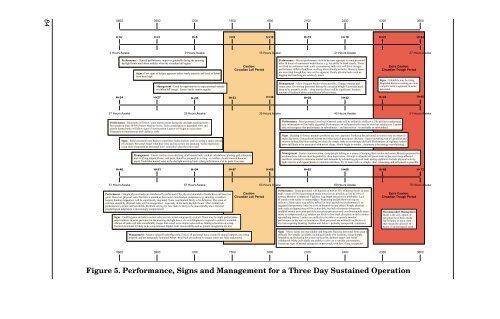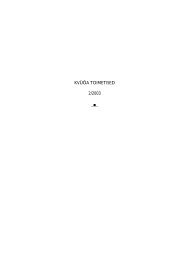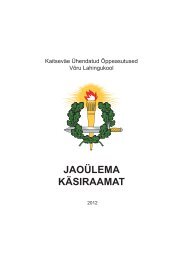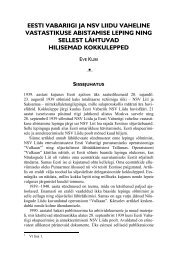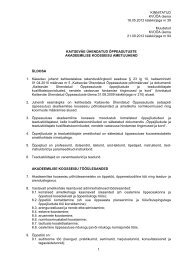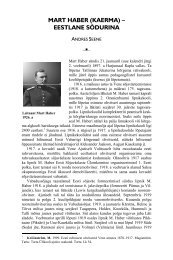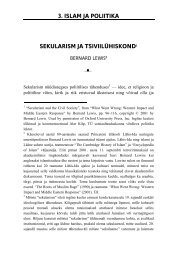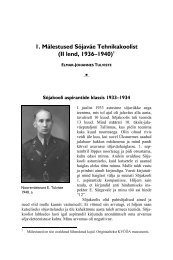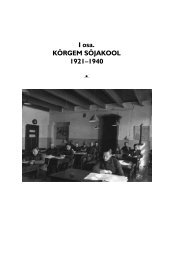Fatigue Management
Fatigue Management
Fatigue Management
Create successful ePaper yourself
Turn your PDF publications into a flip-book with our unique Google optimized e-Paper software.
84<br />
0600 0900 1200 1500 1800 2100 2400 0300 0600<br />
HHr H+3 H+6 H+9 H+12 H+15 H+18 H+21 H+24<br />
3 Hours Awake 9 Hours Awake 15 Hours Awake 21 Hours Awake 27 Hours Awake<br />
Performance - General performance improves gradually during the morning<br />
daylight hours until about midday when the circadian lull begins.<br />
Signs - Few signs of fatigue apparent unless battle intensity and level of threat<br />
have been high<br />
<strong>Management</strong> - Look for opportunities to nap personnel outside<br />
circadian lull/trough. Ensure meals remain regular.<br />
Caution:<br />
Circadian Lull Period<br />
Performance - Mental performance deficits become apparent in some personnel<br />
after 18 hours of continuous wakefulness, e.g. the ability to think clearly. Those<br />
involved in continuous tasks such as monitoring radio nets will have stronger<br />
performance deficits than those working intermittently on tasks. Memory lapses<br />
are occurring though they may not be apparent. Purely physical tasks such as<br />
digging and marching are relatively intact.<br />
<strong>Management</strong> - Allow frequent breaks where possible. Change routines and<br />
rotate tasks. Do not nap personnel during the circadian trough if you may need<br />
them to be instantly awake - sleep inertia effects will be significant. Increase<br />
amount of feedback about subordinates’ effectiveness.<br />
Extra Caution:<br />
Circadian Trough Period<br />
Signs - Irritability may be rising.<br />
Degradeddecisionmakingonmore<br />
complex tasks is apparent in some<br />
personnel.<br />
H+24 H+27 H+30 H+33 H+36 H+39 H+42 H+45 H+48<br />
27 Hours Awake 33 Hours Awake 39 Hours Awake 45 Hours Awake 51 Hours Awake<br />
Performance - Most tasks will show some improvement during the daylight morning hours -<br />
but remain at least 20-30% below baseline levels. Team coordination is degraded. New and<br />
poorly learned tasks will show signs of deterioration. Lapses will begin to occur more<br />
frequently on monotonous and vigilance tasks.<br />
Signs - Some personnel may begin to experience hallucinations such as seeing a snake instead<br />
of a branch. Personnel forget what they were saying as they are speaking. Verbal repetitions<br />
occur more frequently as personnel don’t remember what they have said.<br />
<strong>Management</strong> - Ensure routine cross-checking of all mental tasks such as calculations, plotting grid references<br />
and verifying targets. Orders and tasks should be prepared in writing - or soldiers should commit them to<br />
paper. Undertake mental tasks in the daylight morning hours when performance is at its peak. Use naps.<br />
Performance - Most personnel involved in mental tasks will be militarily ineffective. The ability to understand<br />
new information will be badly degraded. Performance on self-paced tasks may be slow but satisfactory. Leaders<br />
may not recognise that performance in subordinates - and themselves - is unreliable or substandard.<br />
Signs - Reading is slower; memory problems are very apparent. Tendency for personnel to want to rely on others to<br />
make decisions. Concealment actions and other tactical procedures decrease - hence increasing risk of casualties and<br />
mission failure. Decision making on relatively simple tasks is increasingly difficult. Performance at vigilance tasks is<br />
poor and likely to be associated with micro sleeps. Minds begin to wander , sleepiness is becoming overwhelming.<br />
<strong>Management</strong> - Foster communication - keep people talking as a means of keeping them awake and aware. Monitor personnel to<br />
evaluate those who are most degraded by sleep deprivation. Attempt to allocate self-paced tasks to the most sleep-affected<br />
members. Attempt to minimise mental task demands by scheduling physical tasks during nighttime. Include physical activity,<br />
light exercise and regular breaks to maintain alertness. Try to make tasks as simple, short, interesting and self-paced as possible.<br />
H+48 H+51 H+54 H+57 H+60 H+63 H+66 H+69 H+72<br />
51 Hours Awake 57 Hours Awake 63 Hours Awake 69 Hours Awake 75 Hours Awake<br />
Performance - Simple physical tasks are satisfactorily performed if the physical demands of battle have not been too<br />
great. However, physical tasks that have a mental or fine motor coordination component e.g. shooting at random<br />
targets, loading magazines, will be significantly degraded. Team coordination likely to be defective. The sense of<br />
exertion caused by physical tasks will be exaggerated - especially in the early daylight hours. Most mental task<br />
performance is erratic and unreliable. Problem solving for new tasks is likely to be unacceptably slow. General<br />
psychological adaptation is increasingly compromised.<br />
Signs - Field hygiene and other routine tasks are not carried out properly or at all. There may be slight performance<br />
improvements in some personnel in the morning daylight hours. An unwillingness to respond to orders is common.<br />
Almost all tasks will take considerably longer than usual, even simple tasks such as finding a location on a map.<br />
Tactical awareness is likely to be compromised. Higher order mental skills such as pattern recognition are lost.<br />
<strong>Management</strong> - Adopt a relaxed leadership style. Ensure all personnel have a mate for mutual support, are eating<br />
properly and are adequately hydrated. Adopt ‘brief back procedures’ to ensure orders are fully understood.<br />
Caution:<br />
Circadian Lull Period<br />
Performance - Some personnel will function at best at 50% of normal levels in most<br />
tasks - most will be functioning at much lower levels, possibly as low as 10% of<br />
normal. Memory is impaired. Vigilance (e.g. target detection) is unreliable. Lack<br />
of contact with reality is commonplace. Reasoning and problem-solving are<br />
defective. Motivation may still be rallied for brief periods but performance is so<br />
degraded that personnel may be a risk to themselves and others. Simple physical<br />
tasks such as digging may still be achievable, but lack of situation awareness,<br />
muddled mental processes and deficient group processes and coordination will mean<br />
safety is compromised, e.g. soldiers are likely to lose track discipline or fail to notice<br />
approaching enemy. Leaders are unlikely to be able to accurately monitor<br />
performance in the unit or themselves. Most personnel are militarily ineffective at<br />
any task requiring thinking. Sudden unit failure - probably unexpected - imminent.<br />
Signs - Micro sleeps are unavoidable and frequent. Rousing personnel from sleep is<br />
difficult. Preventable accidents, including friendly fire incidents, rising sharply.<br />
Irritability and bickering have been replaced by dullness/stupor and social<br />
withdrawal. Many individuals are unable to carry on a sensible conversation.<br />
Numerous signs of mental exhaustion in personnel, with few, if any, exceptions.<br />
Extra Caution:<br />
Circadian Trough Period<br />
Recommended <strong>Management</strong><br />
Sleep is the only option. If<br />
personnel have been awake<br />
for 70 hours or more, then<br />
they should be allowed 10<br />
hours of uninterrupted sleep.<br />
0600 0900 1200 1500 1800 2100 2400 0300 0600<br />
Figure 5. Performance, Signs and <strong>Management</strong> for a Three Day Sustained Operation


